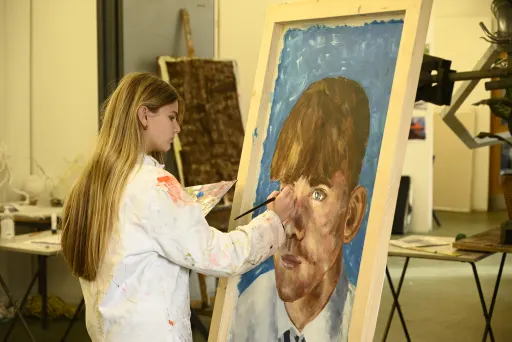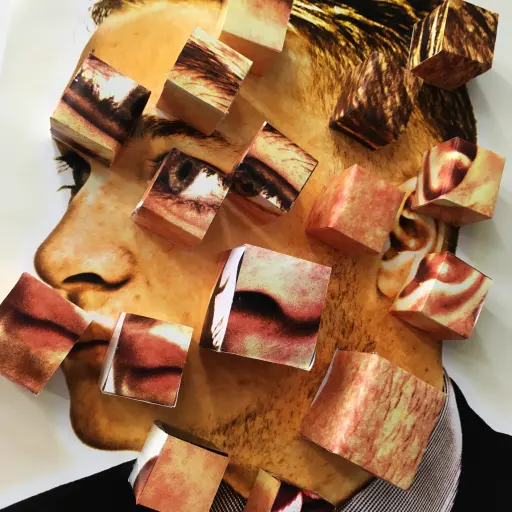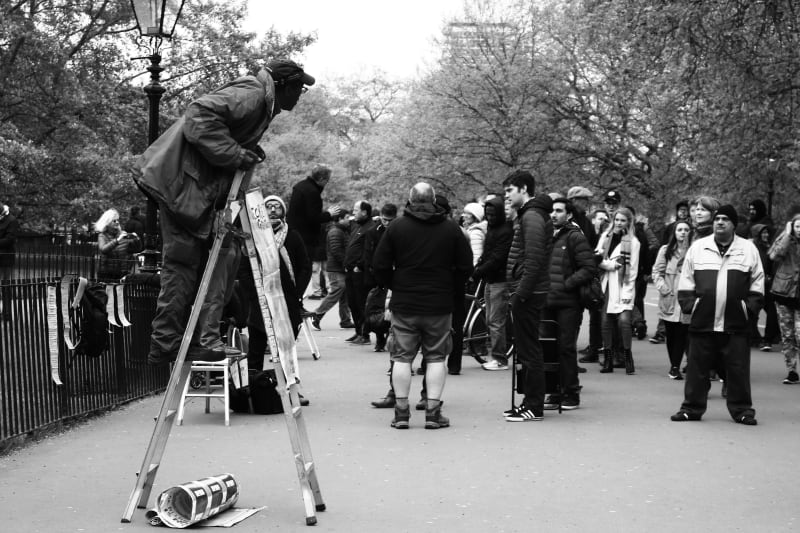Art & Design
Extensive Facilities
The Art Department is equipped with 8 specialist Art studios, including a photographic studio, Mac suite, photography darkroom, clay room, 3D room, print studio and a painting and drawing studio, as well as its very own gallery. The 3D Department has CNC printing and laser etching that are accessible to all.

The Tomlinson Art Gallery
The Good Schools Guide recently described our Art Department as a “hive of energy, where everybody finds their niche.”
The Good Schools Guide has consistently awarded The Oratory top accolades both for A Level and GCSE Art and Design, confirming our place nationally as one of the top schools for art in the country. The department believes that anyone can be an artist, and that here film making, textiles, coding and animation are all possible alongside traditional Art media. In an age where creative thinking is becoming increasingly important in the workplace, the Oratory Art Department is well placed to equip our students for the future.
About
In a world saturated with imagery, it has become increasingly important to be visually literate.
At The Oratory we teach students how to see and perceive the world around them. To look for opportunities visually across many diverse areas in terms of spatial awareness and visual acuity. The relevance of Art is not just in producing more artists or beautiful pictures but in producing people who can think like artists, who think laterally ‘out of the box’ and creatively. Who seek opportunities to connect ideas from different specialisms and subject areas in order to realise their vision.
We place an emphasis on creativity, rather than draughtsmanship, across many diverse areas; from photography, film making and graphics through to installation, sculpture and ceramics, embracing old and new technologies. We believe in the Dadaist principles that anyone can be an artist and anything can be art. The department is a mecca for students’ art and develops what our students do best: competing, risk taking, doing before thinking and turns it to their advantage, in a subject which is all about discovery, mistakes and happy accidents.
Mr Phillip Chaundy - Director of Art and Design
Curriculum
GCSE Art & Design
|
PORTFOLIO (COURSEWORK) |
|
Portfolio of practical work (01) 120 Marks |
|
EXTERNALLY SET TASK |
|
The early release paper will be issued on 1 January and will provide learners with a number of themes, each with a range of written and visual starting points. |
A Level Art and A Level Photography
|
COURSEWORK |
UNIT 1 (48%) |
|
Supporting studies and practical work will comprise a portfolio of development work and outcomes based on themes and ideas developed from personal starting points. |
Coursework - internally set, assessed by the teacher and externally moderated. |
|
WRITTEN COMPONENT |
UNIT 1 (12%) |
|
The personal study will be evidenced through critical written communication showing contextual research and understanding in a minimum 1000 words of continuous prose, which may contain integrated images. |
Coursework - internally set, assessed by the teacher and externally moderated. |
|
EXAM UNIT |
UNIT 2 (40%) |
|
A body of work over 8 weeks including journals will be submitted as well as a timed examination piece completed within 15 hours in response to an externally set theme from 1st February of the Upper 6th. |
Internally set, assessed by the teacher and externally moderated.
|
Co-Curricular
Throughout the year, the department runs a series of workshop sessions, often initiated by students' individual interests, from traditional painting skills through to film making, astro-photography, and animation.
Beyond the Course
An Art and Design education will teach students how to see and perceive the world around them and to look for opportunities visually across many diverse areas in terms of spatial awareness and visual acuity. To nurture the ability to get more information visually from the world around you in the manner an architect might perceive how a building was built around them just by standing in it or how a surgeon may think through and employ their fine motor skills on the operating table. This all comes from the experience of handling materials physically and practically as well as thinking and visualising what you see. So the relevance of Art and Design is not just in producing more artists or producing aesthetically appealingpictures but in producing people who are holistically well-rounded, can think laterally ‘out of the box’ and also have the ability to undertake independent and self-directed learning which is crucial for 6th Form learning and beyond.
Beyond the A Level Art and Design Endorsements:
This syllabus supports progression into further education, training or employment. Higher education opportunities and beyond could include:
Foundation studies in Art and Design;
Higher National Diplomas in Art and Design;
Foundation Degrees in Art and Design;
Honours Degrees in Art and Design; Product Design, Film, Graphics or Architecture, Industrial Design, Textiles, Theatre Design, Civil Engineering, Mechanical Engineering, etc.
Apprenticeships or other training.
In addition to providing a secure foundation for study in higher education, the syllabus equips candidates with a range of skills in business, education and the arts. The syllabus is intended to meet the needs of the following groups of candidates:
Those who, while having an interest and aptitude in the subject, are not intending to study the subject beyond A Level.
Those who will undertake further studies in Art and Design.
Should students not be looking to pursue Art and Design beyond A Level, these courses will enable them to demonstrate genuine problem-solving, independent learning skills, and time management skills, ensuring all our students are prepared for the world of higher education or employment. Most importantly it will enable candidates to be visually literate in a world where image, creative ideas, marketing, branding, identification and efficient graphic communication are paramount.
Top School for Art & Design
The Oratory School was recognised as England’s Top Sixth Form Subject Performer in A Level Art & Design in 2018 by Oxford Analytics.
Students have been acknowledged as having achieved the highest national average student progress and the most outstanding A Level performance in this subject in England. As a result, The Oratory is now regarded as the No.1 centre (value added) of all reported centres* that taught A Level Art & Design in England in 2017-18.
Director of Art, Phil Chaundy, said: “Anyone who enters our Art and Design Departments can immediately see the sheer ambition in the quality of creative work produced here. It is great to have received recognition for this.”
The Oratory Art and Design Departments are described as a “hive of energy, where everybody finds their niche” by The Good Schools Guide. The departments are equipped with 8 specialist art studios, which include a photographic studio and darkroom, a clay room, a 3D room, a painting and drawing studio and its very own gallery. Here, anyone can be an artist and anything can be art. All students are encouraged to use any material they wish to convey their vision. Recently a student spent a short time in hospital and used it as inspiration, turning it into a universal comment on hospital care and mortality using plaster casts from real bones and video loops for his A Level project.
Oxford Analytics exclusively serve the education sector and specialise in supporting post-16 providers in the analysis of performance and the raising of achievement in subjects. One element of research considers student progress in preference to student outcomes, highlighting examples of excellence that are often invisible (and uncelebrated) in headline performance table measures.
The Oratory School is proud to have achieved this significant accolade, which is testament to the talent, dedication, hard work and commitment of The Oratory School’s Art and Design Departments’ staff and their students.
Three-Dimentional Design
Three-Dimensional Design is defined here as the design, prototyping and modelling or making of primarily functional and aesthetic consumer products, objects and environments. Learners can choose one or more area(s) of study including but not exclusively architectural design, product design, environmental/ landscape design, as well as design and communication work. Candidates will be expected to develop their skill set and knowledge across computer-aided design, model making, prototyping, constructing, assembling. An understanding of the relationship between form and function is essential. Learners must explore practical and relevant critical and contextual sources such as the work of historical and contemporary three-dimensional designers and the different purposes, intentions and functions of three-dimensional design as appropriate to their own work.
Learners beginning this course are not expected to have studied Design and Technology previously.
The course is split into the same two components as the Unendorsed Art and Design course
Beyond the course: Those candidates who complete this course and attain a grade 6 or above are well placed to then continue their study onto A-Level GCE Three-dimensional design course.
Read more about Three-Dimensional Design here.


